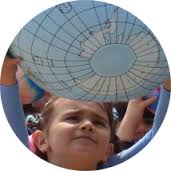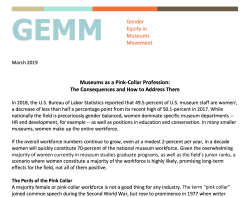Museum Leadership in Trumplandia
Posted: February 5, 2017 Filed under: Authentic, Community, Leadership, Museum, Self-Aware | Tags: Leadership, museums, transparency, workplace culture 3 Comments
If we were sitting in a darkened theater, watching film of the last 10 days we might actually laugh because some things seem so absurd. There is an Alice-Through-the-Looking-Glass quality to what are now known as “alternative facts.” But we aren’t in a movie theater; this seems to be life as we’re getting to know it. So with that in mind, here are some bullet points about museum leadership in Trumplandia.
- Know your community. Embrace them all. Even the ones you as a leader might not easily befriend. Don’t preach to the choir. Be the place–whether through programming, exhibits or education programs–where everyone is acknowledged as someone who matters.
- Know your collections. If you are master of a collection that reflects generations of white privilege, turn it on its head. Think about the work of Titus Kaphar and invite your city’s artists, photographers, and people to react to your collections. Find a way to say we may be the result of privilege, but as an institution we don’t behave that way.
- Know your staff. How can you preach institutional open-mindedness if the staff break room tolerates cruel remarks or inequity. Make sure your institutional culture models how you want your museum to be in the world.
- If you haven’t addressed your HR policy in a while or, God forbid, you don’t have one, use this moment. This is a world where the White House tells some of its staff to “dress feminine,” so make sure you have defined, know, and believe in your institutional policies. And while you’re at it, review your museum’s values statement.
- Think about your Internet Use Policy. If you don’t have one, you have work to do. This is a time where change can happen in the second it takes to press the return button on a keyboard. How do you want staff to separate their work selves from their online selves?
- Based on what you know about your community, collections and audience, talk with your board. Understand and internalize how political and engaged it wants the museum to be. Think about where and how you can push the envelope and what that will mean for you, your staff, and your institution. If you are active with social justice or political organizations separate from your museum, and are likely to be photographed, quoted or interviewed as part of your volunteer work, consider sharing that information ahead of time.
- Be self-aware. Consider the necessity of self-editing. Which is more important to you: your right to free speech at a museum event or enraging a potential donor who doesn’t share your views? When in doubt, channel your inner Michelle Obama, and remember, “When they go low, we go high.”
- Last, museums are such marvelous places. They can and should reflect their communities. Be the place that offers quiet in a world of tumult, welcomes everyone in a world of identity checks, treats its staff with kindness and equity, provides facts not alternative narratives, and encourages curiosity and engagement. Here’s an example for all of us from Cornell University’s Olin Library. Without taking a position, in the clearest possible language, it makes its point.
If there ever was a time for museums, heritage organizations, zoos and botanical gardens to push mediocrity aside and be the best they can be, this is it. Let us know how you are coping and changing in 2017.
Joan H. Baldwin










I also want to add, don’t condemn those whose values and ideas and, heaven forbid, politics are different than yours. Don’t assume everyone thinks like you do just because it appears the “right way to see it and how can they possibly see it differently?”.
[…] Museum leadership in Trumplandia from Leadership Matters […]
Great article; Appreciate the insight!